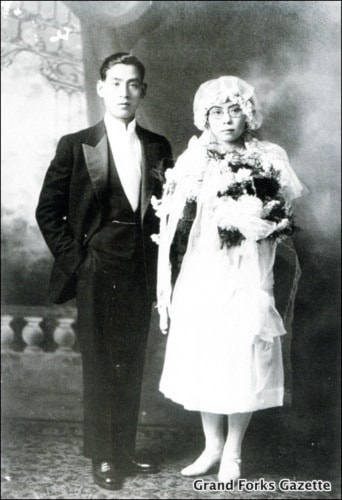In 1942, when Japanese Canadian communities on the west coast of British Columbia were forcibly relocated to Interior internment sites, each adult was allowed to take only 150 pounds of belongings.
As a result only essentials were packed and everything else, including family albums, were entrusted to the care of the government’s custodian of enemy alien property.
Soon after their departure everything – homes, businesses, and personal possessions - was confiscated and sold at public auction by the custodian.
What happens when photographs are lost and all that is left are fading memories?
Beginning in the mid-1970s, Japanese Canadians began gathering memories, stories and archival materials to reconstitute their history.
The aim of this exhibition is to contribute to this effort by recognizing the pioneer work of Japanese Canadian photographers and to raise questions regarding the value of photographs.
Among the 80 photographs chosen for this exhibition are prints made from more than 800 dry glasses negatives found in Cumberland on Vancouver Island.
They are from the studio of Messrs. Hayashi, Kitamura and Matsubuchi (1913-1932) and represent the residents of this coal mining town.
In contrast, the photographs taken by the studio of P.L. Okamura (1902-1937), of New Westminster, are largely portraits of the town’s elite and civic events, as Mr. Okamura held a respected position in the community as Professor of Drawing at the Oblates’ St. Louis College, from 1893.
Son of Japanese nobility, he came to Canada with education from Japan’s newly established Technical Fine Arts School, in Tokyo, which hired western masters to teach arts and science.
While these two studios drew their clientele from the community in which they served, the seven studios located in Vancouver served the Japanese immigrant communities in Vancouver (Japan Town), Steveston and the Fraser Valley and their photographs document occupations, social events, and interest groups.
Noteworthy amongst the Vancouver photographers is Shuzo Fujiwara (1910-1914), who studied with a famous Japanese professional photographer, Hikoma Uyeno (1838-1904), in Nagasaki, before emigrating.
Mr. Fujiwara and Mr. Okamura, two early photographers to Canada, who were educated in Japan, may be said to have influenced the quality and style of the development of early-Japanese Canadian studio photography.
The exhibition is on loan from the Japanese Canadian National Museum and runs at Gallery 2 until Sept. 12.
